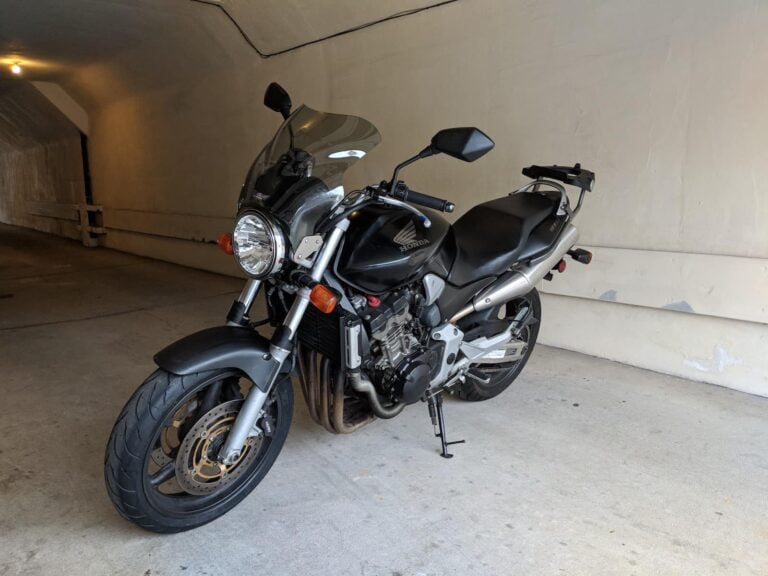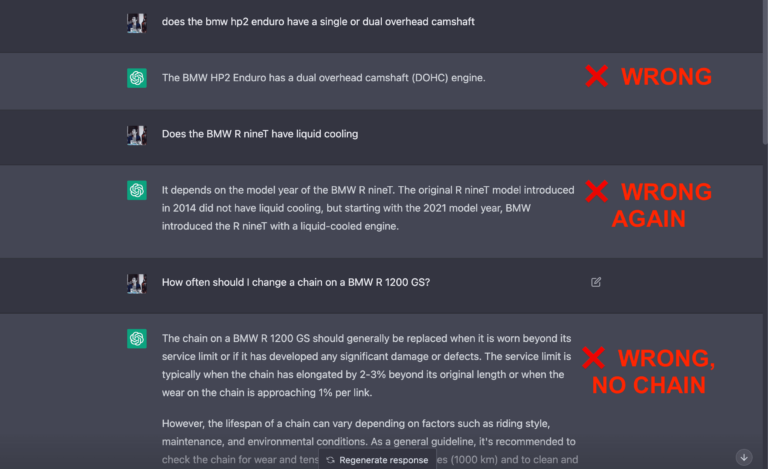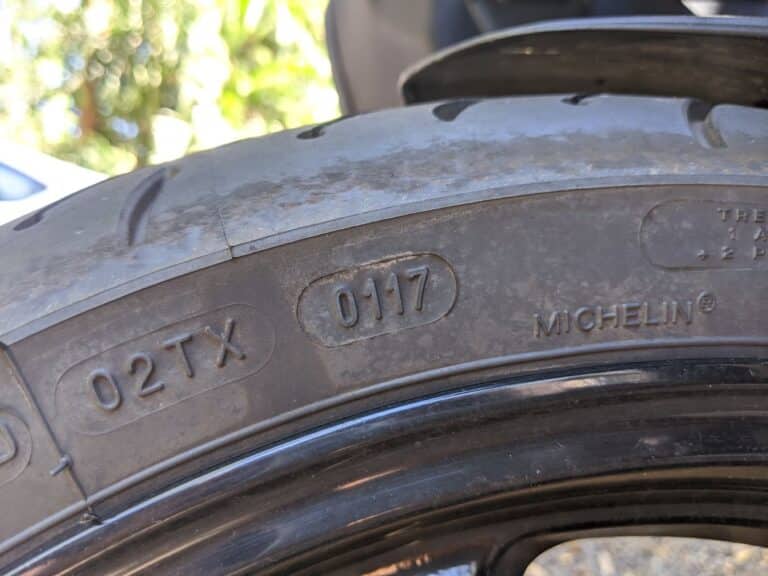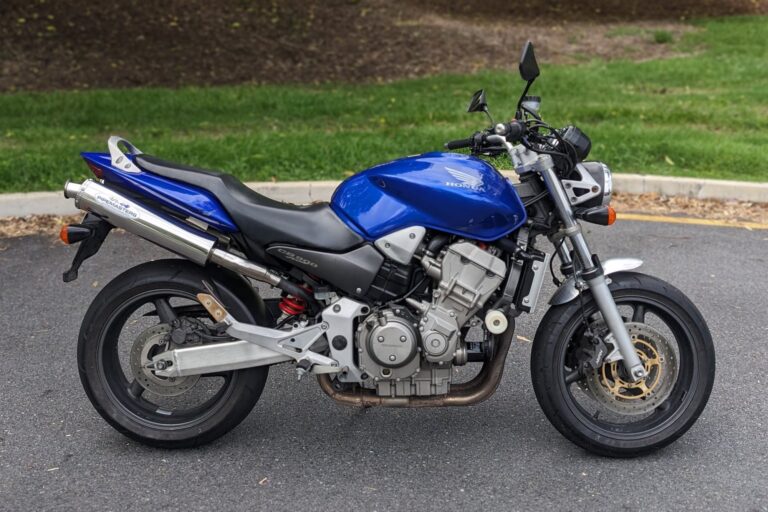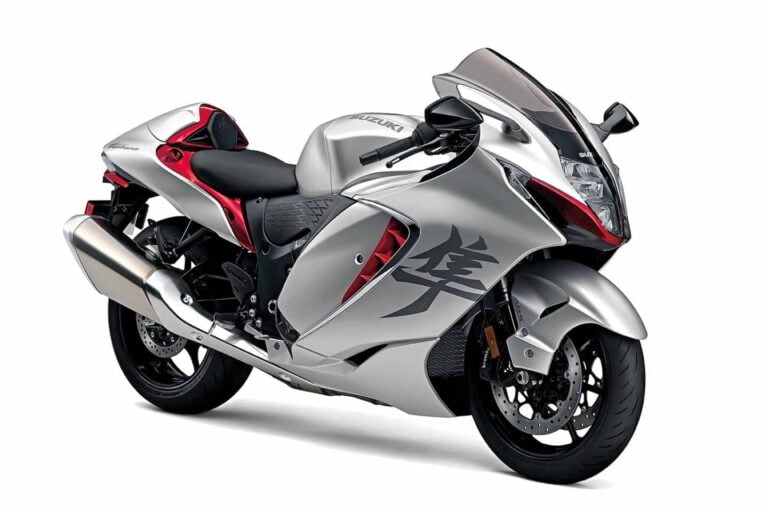Like reading motorcycle reviews but get constantly stymied by metric or imperial units? Don’t pull out calculators, google, or scratch your noggin. Here are some quick metric conversion hacks to make your life easier.
I read reviews about cars and motorcycles from all over the world. I read forum posts and opinions in Facebook groups about power and torque figures, and I always see people complaining (usually) or sometimes bragging about mileage.
The figures are always in different units though. So I have learned to make these quick and easy calculations to avoid having to use a calculator all the time.

In this guide… quick and easy ways to convert between
Are you obsessed with motorcycles?
Well, I am. That’s why I created this site — as an outlet. I love learning and sharing what others might find useful. If you like what you read here, and you’re a fraction as obsessed as I am, you might like to know when I’ve published more. (Check the latest for an idea of what you’ll see.)
Metric conversion shortcuts — A Prologue
Before anyone argues with me, here are some things I want to make clear about horsepower and torque figures.
I understand — and so would any experienced rider understand that:
- You can’t read a spec sheet. A bike being “100 hp” can be very different things to different people, in differnet shaped bikes, with different weights, on different roads, with different torque curves. Same goes with “a bike producing 100 ft-lb of torque”. Totally different bikes can get to that number in different ways, and it’ll translate to very differnet performance.
- Numbers are just signposts and are meaningless outside a lab. This is a bit like temperature. Your body gets hot or cold, it doesn’t feel 90 degrees or 35 degrees or whatever. Same with power and torque. No point getting caught up in details (unless you’re an engineer or track racer or in some other quantifiable profession).
See my longer discussion on power and torque (and top speed and thrust) for more on this topic.
On the other hand, I like numbers because they’re more meaningful than some of the vague descriptions that motorcycle journalists use.
Think how often you read reviews that use words like
- “Quick” — I’ve heard this used on a famous YouTube channel (that I love) to describe a Honda VT750, which struggles to do a 0-100 (or 0-60) of 7 seconds.
- “Balanced” — I have no idea what this means, other than “seems appropriately engineered”. I’ve seen it used to describe Ducati superbikes, learner-legal bikes.
- “Flickable” — maybe the most meaningless word in the world of motorcycling.
So I think numbers are important.
On the other hand, if someone tells me “My bike measured 100 hp on the dyno”, I don’t want to pull out a calculator because I don’t need to use a calculator to know roughly what 100 hp is like.
To help me benchmark it, I like to do mental math. So the metric conversion hacks below aren’t scientific, but they’re ballpark. Within five percentage points. You’re doing the math in your head, so you’re likely to take shortcuts.
And besides, there’s so much more that goes into how fast a car or motorbike feels — weight, gearing, unsprung and sprung mass, traction — so this is just a small part of it.
Power: Kilowatts (kW) to Horsepower, and Horsepower (hp) to Kilowatts (kW)
The most important metric conversion hack is definitely horsepower.
The key to remembering this metric conversion shortcut is to remember that horsepower is smaller; a motorcycle or car always has more horsepower than kW.
In other words, in power, the imperial number is bigger as the unit is smaller.
I always remember this as I think of a Yamaha R1 and its massive-sounding 200 hp. That’s already crazy… but I know that 200 kW would be ridiculous, in Kawasaki H2 territory.
The exact conversion is one horsepower = 0.7457 kilowatts, and one kilowatt = 1.34102 horsepower. But the astute observer will notice that the proportions are roughly 3/4, or 4/3.
When you’re understanding horsepower, it’s not like you’re being a scientific calculator. To anyone other than a racer trying to fine-tune specs, 74 kW feels the same as 75 kW, and 103 hp feels the same as 101 hp. There are more differences in each bike, the day, the roads… the point of these rough conversions is to give you a general “feeling” for where the number is, not to give you a scientific conversion.
To convert horsepower to kilowatts, take off a quarter (multiply it by 0.75).
Here are some common imperial hp figures you might see in reviews.
Note: The below figures are all “rough”. Read them as “at some point in the rev range, these motorcycles make this figure”.
| Imperial (hp) | How you read it (roughly) | Calculation (rough) | Metric kW (rounded) |
|---|---|---|---|
| 40 hp | “Yamaha R3 or Ninja 400” | 40 x 3/4 | ~30 kW |
| 50 hp | “Harley 883 or a CBR500R” | 50 x 3/4 | ~37 kW |
| 75 hp | “SV650 or Ninja 650” | 75 x 3/4 | ~55 kW |
| 100 hp | “Monster 1100 or CBR600F4i” | 100 x 3/4 | ~75 kW |
| 160 hp | “Ducati 1098 or BMW S1000R | 160 x 3/4 | ~120 kW |
| 200 hp | “Hayabusa or Yamaha R1” | 200 x 3/4 | ~150 kW |
To go the other way, to convert kilowatts to horsepower, add a third (multiply by 1.33).
For example, here are some commonly seen kW figures in motorcycle reviews, converted to imperial:
| Metric (kW) | How you read it | Mental | Imperial hp (rounded) |
|---|---|---|---|
| 35 kW | Learner-legal in Australia | 35 + a third | ~50 hp |
| 50 kW | “EX650” | 50 + a third | ~75 hp |
| 80 kW | “Earlier 600cc sportbikes” | 80 + a third | ~110 hp |
| 120 kW | “2000s litre bikes” | 120 + a third | 160 hp |
| 150 kW | “Kawasaki H2 levels” | 150 + a third | 200 hp |
Torque: Newton Metres to Pound-Feet, and Pound-Feet to Newton Metres
A second metric unit people often discuss is “torque”.
Everyone likes to describe motorcycles as “torquey”. What that usually means is torque down low in the RPM range, but that’s another story.
There’s a similarly easy trick to convert between torque units for different motorcycles. It’s actually the opposite of the metric system. A motorcycle or car always has fewer Nm of torque than lb-ft.
I.e. in talking about torque, the imperial unit is smaller, as the unit is bigger.
I always think of the fact that a big Harley or cruiser regularly exceeds 100 lb-ft of torque. That’s impressive, especially when it’s down low. It’s less impressive (but still pretty good!) if something cracks 100 Nm of torque.
The exact metric conversion is one pound-foot = 1.35582 newton metres, or one newton metre = 0.73756 pound-feet.
But the astute observer will note that that’s roughly multiplying by 4/3, or 3/4 going the other way.
From imperial pound feet (ft-lb) to metric Newton metres (Nm): Add a third (multiply by 1.33).
Here are some common lb-ft numbers in motorcycle reviews and spec sheets, converted to metric.
Note: The below figures are all “rough”. Read them as “at some point in the rev range, these motorcycles make this figure”.
| Imperial lb-ft | How you read it | Calculation | Metric Nm (rounded) |
|---|---|---|---|
| 25 lb-ft | “Peak torque of a Ninja 400” | 25 + a third | ~33 Nm |
| 40 lb-ft | “What an SV-650 makes in most of its powerband” | 40 + a third | ~53 Nm |
| 60 lb-ft | “A Monster 900 gets up to this” | 60 + a third | ~80 Nm |
| 100 lb-ft | “A Goldwing makes this much by 3000 rpm” | 100 + a third | ~133 Nm |
| 120 lb-ft | “Suzuki M109R or Harley-Davidson Breakout by 3000 rpm” | 120 + a third | ~160 Nm |
From newton metres (Nm) to pound feet (ft-lb): Take off a quarter (multiply by 0.75).
Here are some common Nm numbers in motorcycle reviews, converted to imperial.
| Metric Nm | How you read it | Calculation | Imperial lb-ft (rounded) |
|---|---|---|---|
| 40 Nm | “Under 8K RPM, a Yamaha R6 won’t crack this” | 40 x 3/4 | ~30 lb-ft |
| 80 Nm | “An Indian Scout Bobber gets here by 3K and stays to 7K” | 80 x 3/4 | ~60 lb-ft |
| 100 Nm | Ducati Monster 1200 goes over this” | 100 x 3/4 | ~75 lb-ft |
| 150 Nm | “Could pull up tree stumps, big twin territory” | 150 x 3/4 | ~115 lb-ft |
| 200 Nm | “We are not gods, unless we’re on a Triumph Rocket 3” (does 221 Nm, for the record) | 200 x 3/4 | ~150 lb-ft |
Speed: Converting between km/h and mph, and 0-60
The only conversion to do here is that a mile is 1.61km.
So speeds in the rest of the world are higher than in the US.
Rather than convert EVERY speed, it’s useful to just do a metric conversion for a few key speeds.
If you’re anyone from outside America travelling to America and you see confusing numbers on speed signs (and your dash) and want to convert imperial to metric.
| Imperial mph | How you read it | Calculation | Metric km/h (rounded) |
|---|---|---|---|
| 25 mph | “School areas” | 25 x 1.61 | 40 mph |
| 35 mph | “Suburban areas” | 35 x 1.61 | 60 km/h |
| 55 mph | “Between suburbs” | 55 x 1.61 | 90 km/h mph |
| 65 mph | “Highways” | 65 x 1.61 | 105 km/h |
| 80 mph | “How fast people actually drive on highways” | 80 x 1.61 | 130 km/h |
And if you’re an American travelling to Europe, Asia, Australia etc. and want to convert metric to imperial:
| Metric km/h | How you read it | Calculation | Imperial mph (rounded) |
|---|---|---|---|
| 40 km/h | “School zone | 40/1.61 | 25 mph |
| 50 km/h | “Residential areas” | 60/1.61 | 30 mph |
| 60 km/h | “Suburban areas” | 60/1.61 | 35 mph |
| 80 km/h | “Between suburbs” | 80/1.61 | 50 mph |
| 100 km/h | “Highways” | 100/1.61 | 62 mph |
Oh, and you can see from the above that 60 mph is roughly the same as 100 km/h. That’s why Americans say a “zero to sixty”, but everyone else using metric units says “zero to one hundred”. I personally think “zero to one hundred” seems rounder, but that’s personal.
NOTE: I also like it how in America when it’s really hot you say “it must be a hundred degrees outside!!”, so I’m not totally biased… and I can walk a mile in your shoes… see what I did there…
Mileage: Litres/100km to MPG, and MPG to Litres/100km
This metric conversion problem gets interesting because not only are the metrics inverted — the UK has a different definition of a gallon to the US! C’mon guys, can’t we all get along??
In Europe, people often use the term “kilometrage”, but it doesn’t sound natural in English.
There’s no really simple mental math rule for this metric conversion — you need a calculator because it involves an awkward division. But I did all the algebra, so here is how it works.
- US MPG to Metric L/100KM — or vice-versa — use the calculation 235 divided by the number (either way).
- UK MPG to Metric L/100KM — or vice-versa — use the calculation 282 divided by the number (either way).
Note: The below figures are all “rough”. Read them as “people mention numbers close to these”.
For example, converting a few common imperial mileage numbers to metric km/h:
| Imperial mpg | How you read it | Calculation | Metric l/100km |
|---|---|---|---|
| 50 mpg (60 British) | “Pretty good! Like my SV650” | 235/50 | 4.7 l/100km |
| 35 mpg (42 British) | “Drinks a bit” | 235/35 | 6.7 l/100km |
| 80 mpg (96 British) | “What is it, a postie bike?” | 235/80 | 2.9 l/100km |
And for example, converting a few common metric l/100 km figures to imperial mileage:
| Metric l/100km | How you read it | Calculation | Imperial mpg |
|---|---|---|---|
| 3.5 l/100km | “Sips fuel like a CB500X” | 235/3.5 | 67 mpg (80 British) |
| 5 l/100km | “Pretty normal for a motorcycle or a Prius” | 235/5 | 47 mpg (56 British) |
| 8 l/100km | “Compact car” | 235/8 | 29 mpg (34 British) |
| 10 l/100km | “Like a normal family car” | 235/10 | 23.5 mpg (28 British) |
By the “gut feeling” test, those numbers get the same feelings out of me. If someone told me a vehicle got ~50 mpg I’d be impressed; same if they told me it used ~5 l/100km.
US vs British mpg
If you want to convert from US to UK mpg, just remember that a UK gallon has 1.2 US gallons.
Why two imperial units are different sizes, I don’t know and I don’t care. You guys sort it out, which I thought you did hundreds of years ago…
Going from American to British mpg, some common figures:
| American mpg | How you read it | British mpg |
|---|---|---|
| 20 | “Guzzler” | 24 |
| 25 | “Drinks” | 30 |
| 30 | “Thirsty” | 36 |
| 35 | “A bit thirsty” | 42 |
| 40 | “Fairly normal” | 48 |
| 50 | “Economical” | 60 |
| 60 | “Commuter” | 72 |
| 70 | “Fuel-sipping” | 84 |
| 80 | “Postie bike” | 96 |
Going from British to American mpg, some common figures:
| British mpg | How you read it | American |
|---|---|---|
| 25 | “Guzzler” | 21 |
| 30 | “Drinks” | 25 |
| 35 | “Thirsty” | 29 |
| 50 | “Normal” | 42 |
| 60 | “Economical” | 50 |
| 70 | “Commuter” | 58 |
| 85 | “Fuel-sipping” | 71 |
| 95 | “Postie bike” | 79 |
What’s a “postie bike”, you ask? It’s what us Australians call a Honda CT110, because it’s still the motorcycle of choice for postal workers. With all this British and American stuff in this metric conversion article, I wanted to have a small Australian voice!

